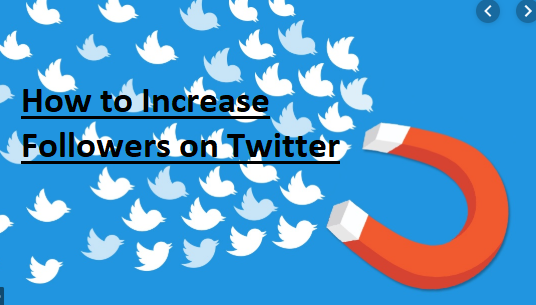Tableau is a powerful data visualization tool used by organizations worldwide to transform raw data into actionable insights. Whether you’re a data analyst, business intelligence professional, or data enthusiast, mastering Tableau can be a game-changer in your career. In this article, we’ll cover a wide range of Tableau interview questions, from the basics to the advanced, to ensure you’re well-prepared for your next interview.
Are you gearing up for a Tableau interview? Whether you’re a seasoned Tableau pro or just starting your Tableau journey, interviews can be nerve-wracking. To help you prepare effectively, we’ve compiled a list of common and advanced Tableau interview questions and their detailed answers. Let’s dive in!
Related: Cyber Security Interview Questions and Answers
Common Tableau Interview Questions and Answers
Question 1: What is the difference between Tableau and Excel?
Tableau is a powerful data visualization tool designed for analyzing and visualizing large datasets, while Excel is a spreadsheet program primarily used for calculations and data storage. The key differences lie in their capabilities and use cases.
In Tableau, you can create interactive visualizations, handle big data, and connect to various data sources, making it suitable for in-depth data analysis and reporting. Excel, on the other hand, is better for smaller datasets, basic calculations, and simple charts.
Question 2: How can you create a calculated field in Tableau?
To create a calculated field in Tableau, follow these steps:
- Right-click in the Data pane.
- Choose “Create Calculated Field.”
- In the calculation editor, write the formula for your calculated field.
- Click “OK” to create the field, which you can then use in your visualizations.
Question 3: Explain the concept of dimensions and measures in Tableau.
In Tableau, dimensions are categorical data that define the structure of your visualization, such as names, dates, or categories. Measures, on the other hand, are numerical data that you can measure, aggregate, or perform calculations on, like sales figures or quantities.
Dimensions are typically used for grouping and organizing data, while measures provide the values to be analyzed. Effective use of dimensions and measures is essential for creating meaningful visualizations.
Question 4: What are the different types of joins in Tableau?
Tableau supports several types of joins, including Inner Join, Left Join, Right Join, and Full Outer Join. These joins determine how data from multiple tables are combined in your analysis.
- Inner Join: Returns only matching rows from both tables.
- Left Join: Returns all rows from the left table and matching rows from the right table.
- Right Join: Returns all rows from the right table and matching rows from the left table.
- Full Outer Join: Returns all rows when there is a match in either the left or right table.
Question 5: How do you handle NULL values in Tableau?
Handling NULL values is crucial for accurate analysis. In Tableau, you can use the ISNULL() or ZN() function to handle NULLs. ISNULL() checks if a field is NULL and returns a Boolean result, while ZN() replaces NULLs with a specified value.
For example, you can use ZN(Sales) to replace NULL values in the Sales column with zero.
Question 6: What is a dashboard in Tableau, and how do you create one?
A Tableau dashboard is a collection of sheets and objects (like images and web content) arranged on a single page. Dashboards allow you to visualize multiple aspects of your data in one view.
To create a dashboard:
- Go to the Dashboard tab.
- Click “New Dashboard.”
- Drag and drop sheets, objects, and containers onto the dashboard canvas.
- Customize the layout and interactions.
Dashboards help you tell a compelling data-driven story.
Question 7: What is a parameter in Tableau, and why is it useful?
A parameter in Tableau is a dynamic value that allows users to replace a constant value in calculations, filters, or reference lines with a value of their choice. Parameters make your dashboards more interactive and flexible.
For example, you can create a parameter to let users choose a date range for analysis, enhancing the user experience.
Question 8: How can you improve the performance of a Tableau workbook?
To improve Tableau workbook performance, consider:
- Extracts: Use data extracts for faster querying.
- Aggregation: Limit the level of detail in your views.
- Filters: Optimize filters to reduce the data loaded.
- Data Source: Optimize your data source connections.
Regularly monitor and adjust these factors to ensure optimal performance.
Question 9: Explain the concept of aggregation in Tableau.
Aggregation in Tableau involves summarizing data at a higher level to reveal patterns or trends. Common aggregation functions include SUM, AVG, COUNT, MIN, and MAX. Aggregating data is essential for creating meaningful visualizations and reports.
Question 10: How do you publish a Tableau dashboard to Tableau Server?
To publish a Tableau dashboard to Tableau Server:
- Save the workbook.
- Go to the Server menu and select “Publish Workbook.”
- Choose the destination project and options.
- Click “Publish” to make the dashboard accessible to authorized users on Tableau Server.
Advanced Tableau Interview Questions
Question 11: What is the Tableau Data Engine?
The Tableau Data Engine is a high-performance, in-memory data store that Tableau uses to store and query data. It accelerates data retrieval and analysis by loading data into memory, making it ideal for large datasets and complex calculations.
Question 12: How can you create a dual-axis chart in Tableau?
To create a dual-axis chart in Tableau, you can:
- Drag two measures onto the Rows or Columns shelf.
- Right-click one of the measures and select “Dual-Axis.”
- Adjust the formatting and synchronization of axes as needed.
Dual-axis charts allow you to visualize two measures with different scales on the same chart, providing richer insights.
Question 13: What is data blending, and when is it used in Tableau?
Data blending is a technique used in Tableau when you need to combine data from multiple data sources or tables. It’s typically used when you have related data in different databases or files that cannot be joined directly.
To perform data blending, you define relationships between the data sources and use a common field to link them together.
Question 14: How do you handle large datasets in Tableau?
Handling large datasets in Tableau requires optimization:
- Use data extracts for faster performance.
- Apply filters and aggregations to reduce data size.
- Utilize Tableau’s data source optimizations.
- Use server-level resources for heavy workloads.
By optimizing your approach, you can work efficiently with large datasets.
Question 15: Explain the process of creating a calculated table in Tableau.
Creating a calculated table in Tableau involves defining a new table based on calculations or conditions applied to existing data. To do this:
- Go to the Data menu.
- Choose “Create Calculated Table.”
- Write the calculation or conditions for the new table.
- Click “OK” to create the calculated table.
Calculated tables can be useful for segmenting data or creating custom hierarchies.
Preparing for Tableau Interviews
Preparing for a Tableau interview involves more than just rehearsing answers. It’s about understanding the role and the company you’re interviewing for. Here are some crucial steps to prepare effectively:
Research the Company
Before you step into the interview room, thoroughly research the company. Understand its values, culture, recent projects, and how Tableau is utilized in their operations. Tailor your responses to align with the company’s ethos.
Understand the Role
Comprehend the specific requirements of the role you’re applying for. Different positions might emphasize different aspects of Tableau expertise. For instance, a data analyst role might focus on interpreting complex data sets, while a data visualization specialist might stress creativity and design.
Practice Common Interview Questions
While every interview is unique, some questions frequently appear in Tableau interviews. Practice explaining Tableau features like filters, calculated fields, and data blending. Be ready to provide practical examples of how you’ve used Tableau to solve real-world problems.
Tips for Acing Tableau Interviews
Showcase Your Portfolio
If you have previous Tableau projects, bring them to the interview. Discuss the challenges you faced, the solutions you implemented, and the impact your visualizations had on decision-making processes. A well-curated portfolio demonstrates your practical skills and creativity.
Discuss Real-life Projects
When answering questions, relate your responses to real-life projects whenever possible. Interviewers appreciate practical examples that showcase your problem-solving abilities. Discuss a challenging project where Tableau played a crucial role, highlighting how your insights positively influenced the outcome.
Demonstrate Problem-solving Skills
Tableau professionals often encounter complex data problems. Demonstrate your problem-solving skills by explaining how you approached a challenging issue in your previous work. Emphasize your ability to analyze data, identify patterns, and derive meaningful insights using Tableau.
Common Mistakes to Avoid
Overcomplicating Answers
While technical proficiency is essential, avoid overcomplicating your answers. Use simple language to explain complex concepts. Clear communication demonstrates your understanding and makes your responses more relatable to interviewers.
Lack of Confidence
Confidence matters as much as knowledge. Maintain eye contact, speak clearly, and believe in your abilities. Confidence reassures the interviewer that you are comfortable with Tableau and capable of handling challenging tasks.
Ignoring the Basics
In the pursuit of advanced techniques, don’t overlook the basics. Ensure your fundamentals are strong. Interviewers may ask fundamental questions to gauge your foundational knowledge of Tableau. Ignoring basic concepts could create a negative impression.
Related: Police Psychometric Test Questions and Answers
Conclusion
In conclusion, mastering Tableau requires a combination of technical expertise, creativity, and problem-solving skills. By thoroughly preparing for interviews, understanding the specific requirements of the role, and showcasing your practical experience, you can confidently navigate Tableau-related questions and impress potential employers.
Upwork Readiness Quiz – Take Quiz Now!





